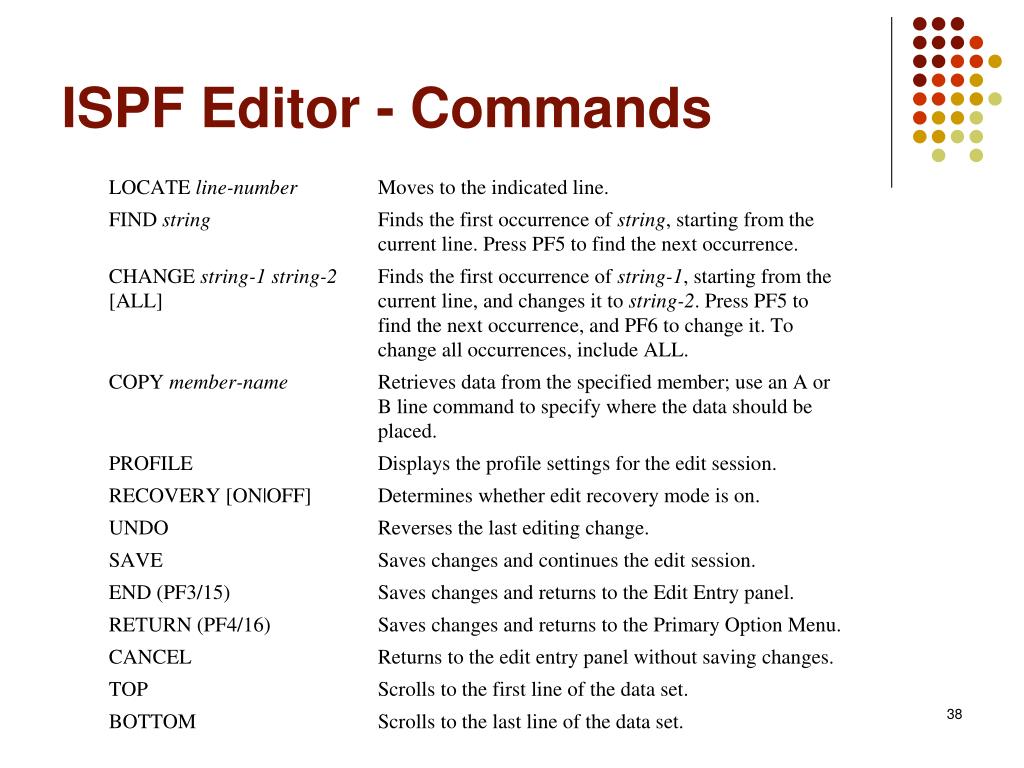

Highlight lines (with ALT+L + SHIFT+mouse click) Position the Cursor + ALT+Z Difference: all characters are overlaid Highlight the lines (with ALT+L + SHIFT+mouse click) Then to insert: Position the Cursor + ALT+M to insert and delete highlighted contents Indicate lines that are to be superimposed (only blank spaces are overlaid) Transfer n lines to one line in an identified location by means of A, B, OĬut & Paste with MS-Windows standard graphical editing operations, with ALT+L + SHIFT+mouse click) + ALT+I lower case letters Select text and use context (right) mouse menu Single line: CTRL+Backspace or: Highlight lines (with ALT+L + SHIFT+mouse click) + ALT+D to delete lines Display the first n lines of a hidden textĭisplay the last n lines of a hidden textĬonvert line characters into lower case letters Select lines and delete with MSWindows standard graphical editing operations, Highlight the lines (with ALT+L + SHIFT+mouse click) Then to insert: Position the Cursor + ALT+C to insert highlighted contents See line commands C and M, as well as the commands COPY and MOVE Column numbers as well as the current cursor position are seen in the LPEX editor in lines 1 and 2.Ĭopy & Paste with MS-Windows standard graphical editing operations, Position the Cursor in front of the line + See line commands C and M, as well as the commands COPY and MOVE Indicate the column numbers in front of the identified lineĬopying of n lines to one line in an identified location by means of A, B, O Documentation of the ISPF commands that are entered into the command line and a function to activate Documentation of the ISPF commands for modification of the ISPF Profileġ.1 ISPF Editor Line Commands Descriptionĭesignate a line, behind which something is inserted.ĭesignate a line, in front of which something is inserted. The documentation of the instructions is subdivided into three groups: ĭocumentation of the ISPF line commands. If the ISPF command is missing, the alternative procedure described in the “LPEX profile” column can usually be used. The “ISPF Profile” column shows whether the ISPF command already exist for using in the LPEX Editor.

The appropriate shortcuts are shown in the following documentation. If the instruction is supported in LPEX, it is usually callable via the “context menu” and/or “shortcuts”.
#Ispf editor line commands how to#
The “LPEX profile” column documents how to implement an instruction from the ISPF Editor that is compatible with the LPEX Editor. only the instructions and/or instruction parameters that are used most often in practice are covered. In the following documentation only the most important instructions in the ISPF editor are compared with those in the LPEX editor, i.e. In comparison to the LPEX Profile, the ISPF Profile offers the additional possibility to have the LPEX editor behave like the ISPF editor. In practice, two modes are relevant: the LPEX and/or the ISPF Profile. The behavior and the “look and feel” of the LPEX editor can be set via the profile window under RDz Preferences. The functions of the ISPF Editor are compared with those of the LPEX Editor.

15ġ Equivalence of ISPF and RDz LPEX Editor Functions This documentation is applicable to the “IBM Rational Developer for System z (RDz) 7.6”.

ISPF Editor Commands in the Command Line. SoforTe GmbH Internet: Email: Įquivalence of ISPF and RDz LPEX Editor Functions. Version 2.2 for RDz 7.6 As of: 03 December 2009 Character is what you are, reputation merely what others think you are.Equivalence of ISPF and RDz LPEX Editor Functions “Worry more about your character than your reputation. The results of using it with EHEX 3 - I named my test macro ehex 😊 I cobbled this together - it is a quick/dirty example of an edit command that will add message lines below the request line with the hex values in a vertical format: You can do it yourself in your edit macro and insert the hex info as a note or message line below the real record. You can turn HEX ON or OFF in an Edit macro but you can't do it for a specific record.


 0 kommentar(er)
0 kommentar(er)
